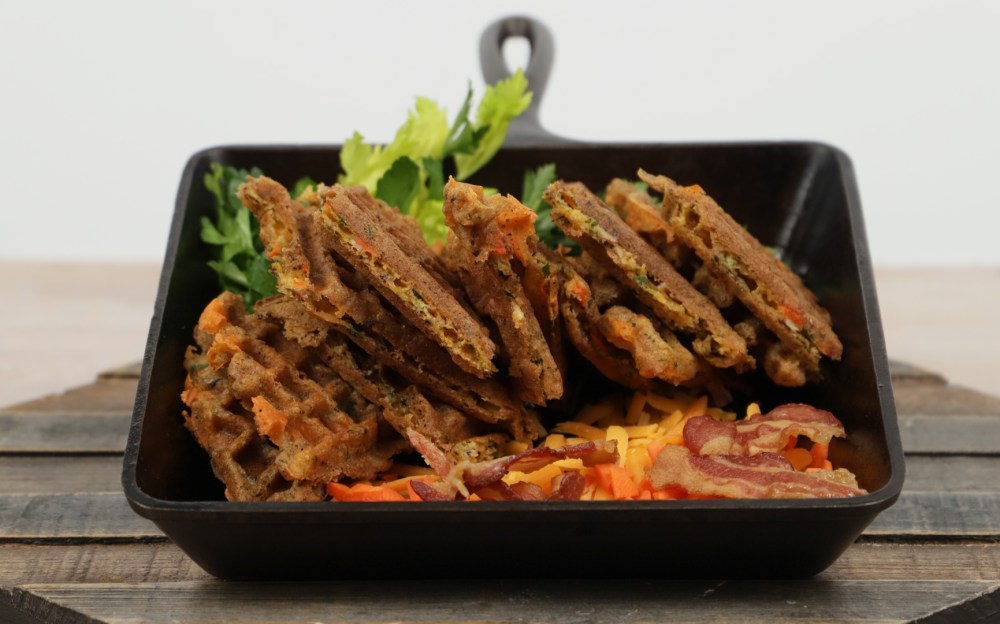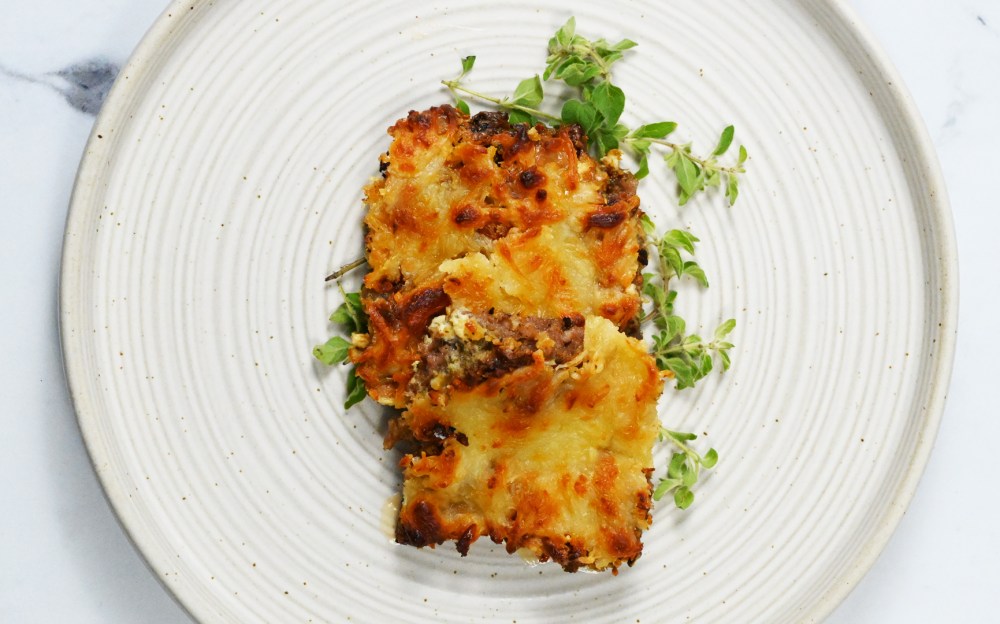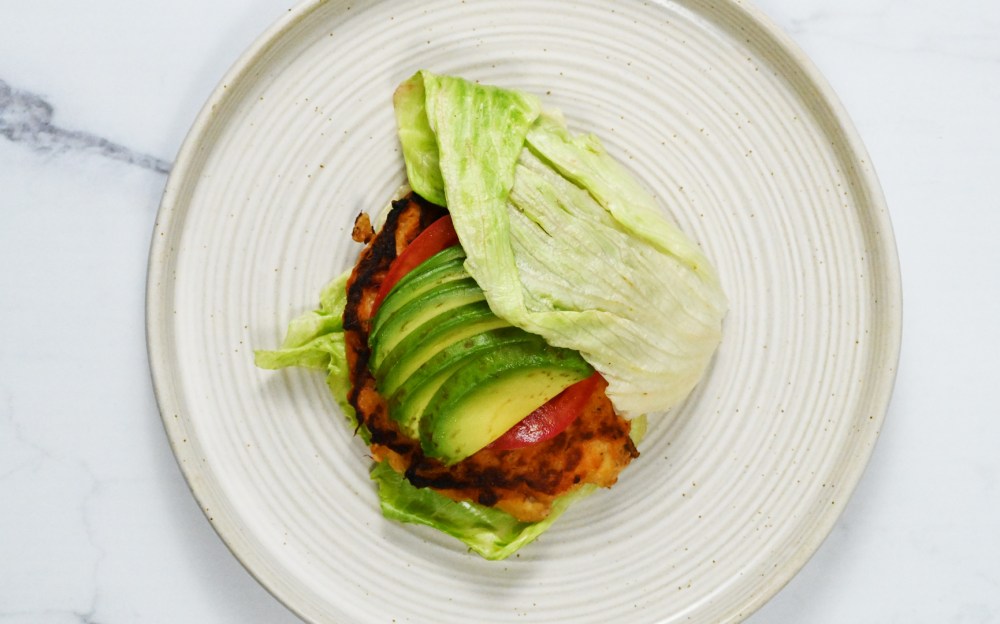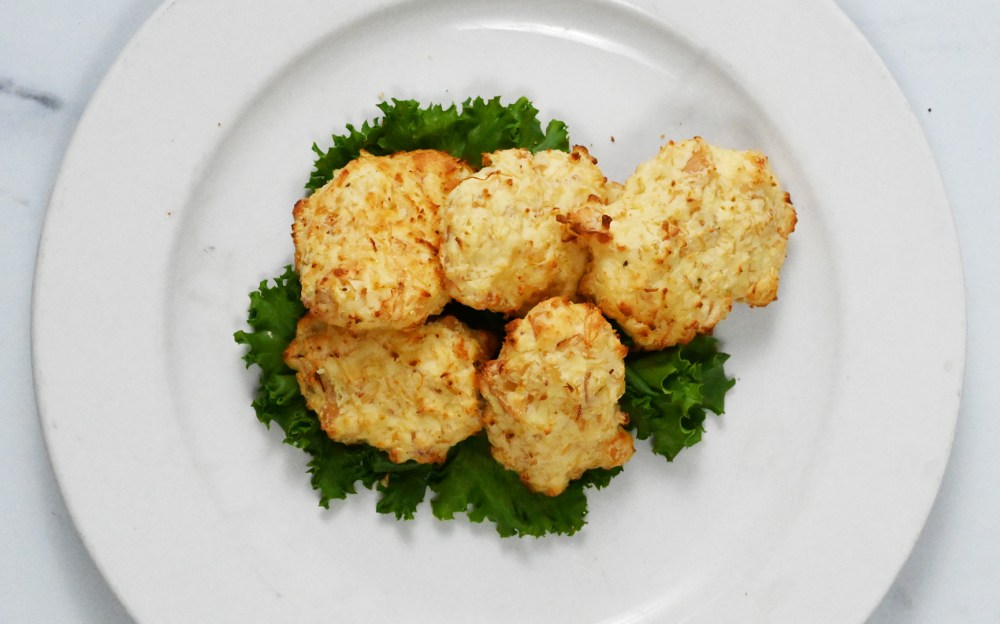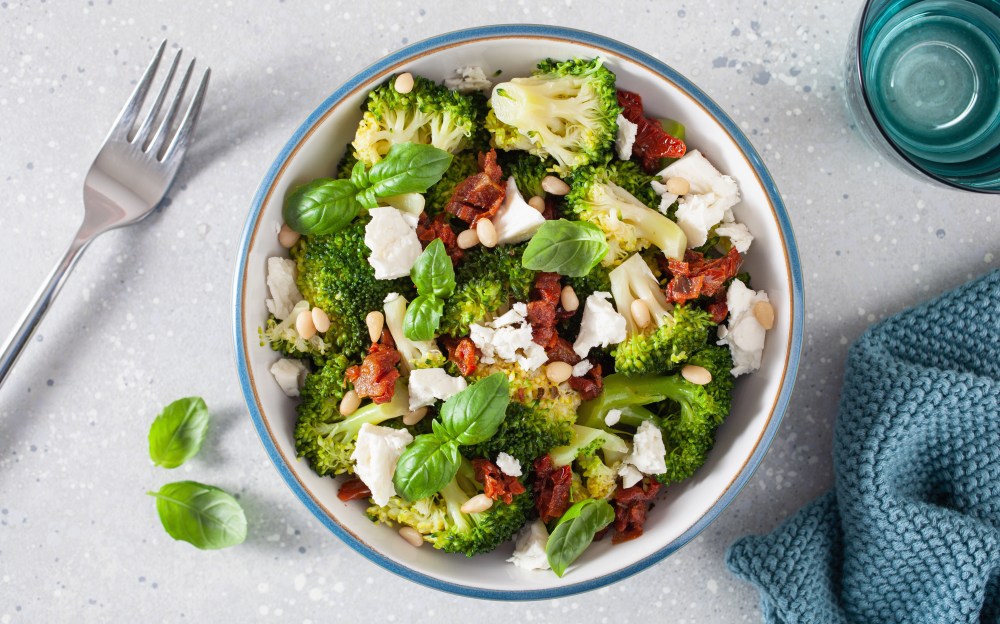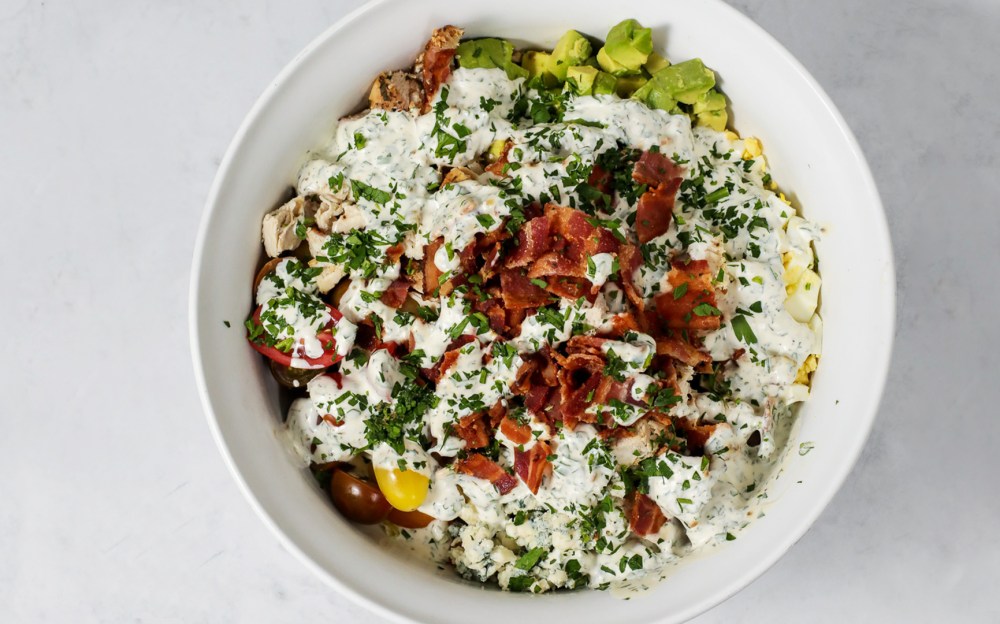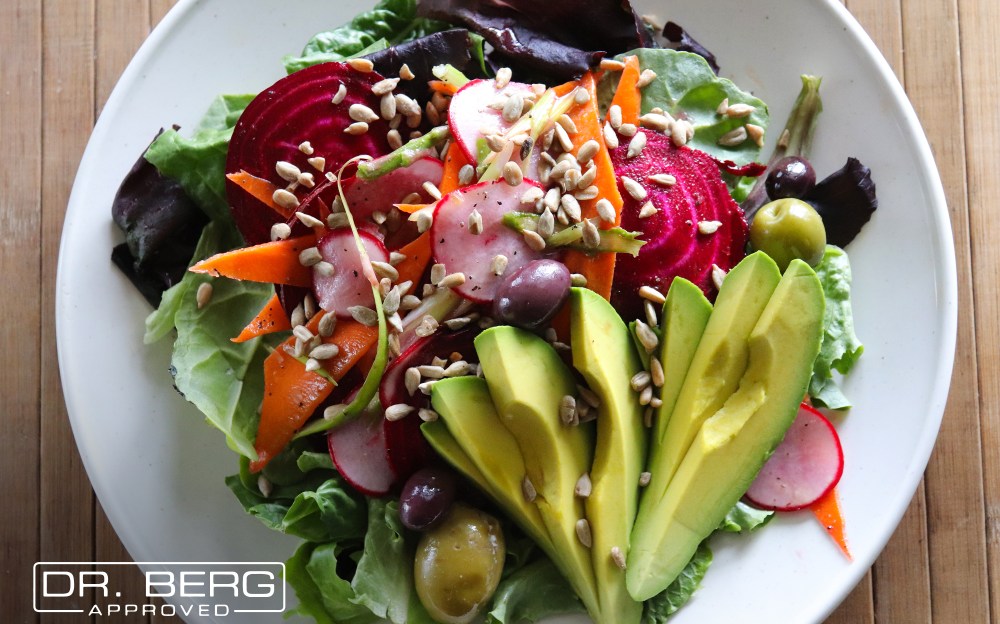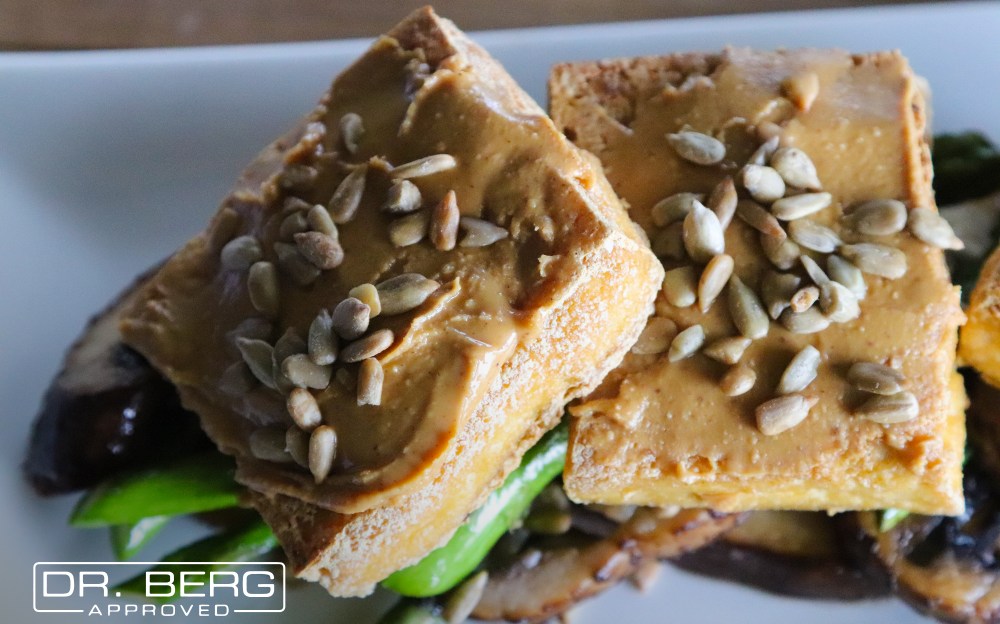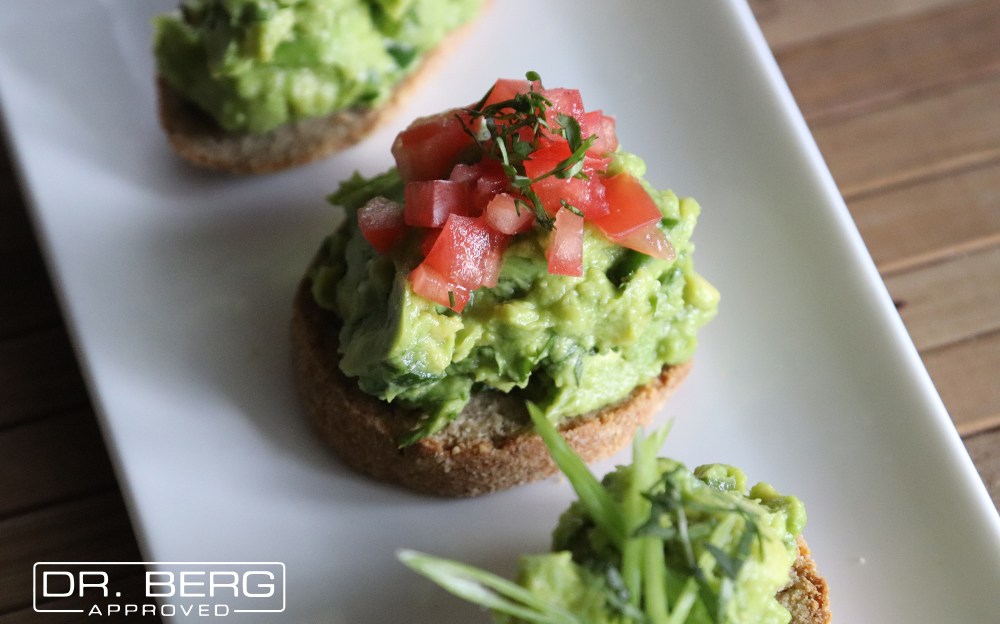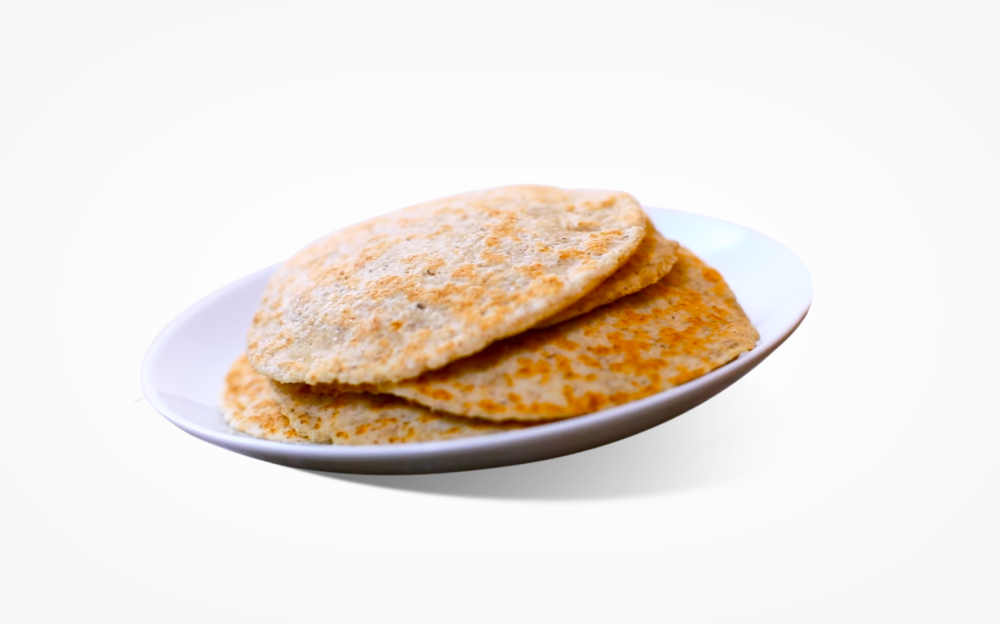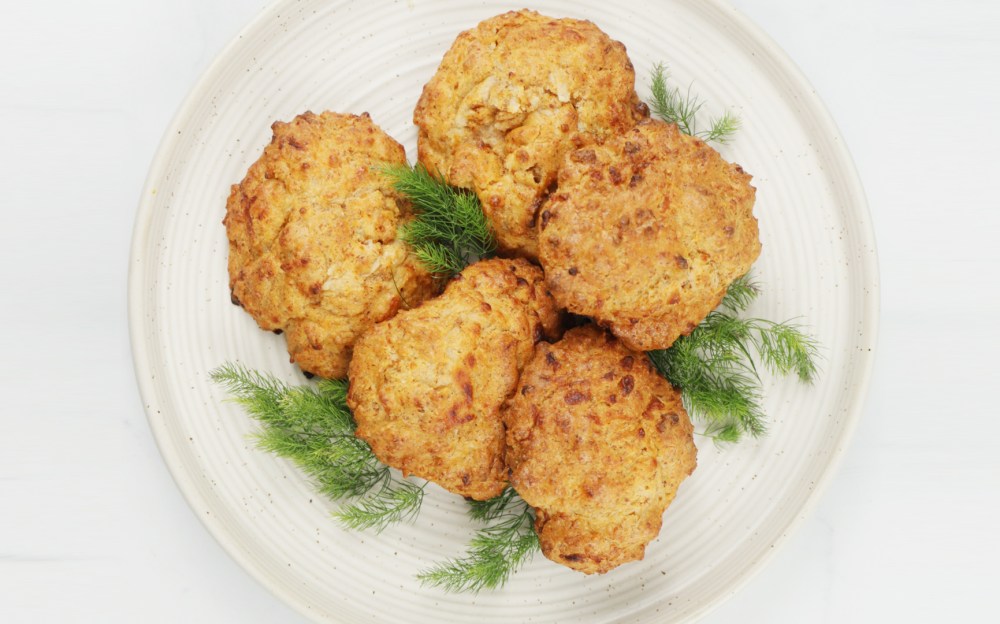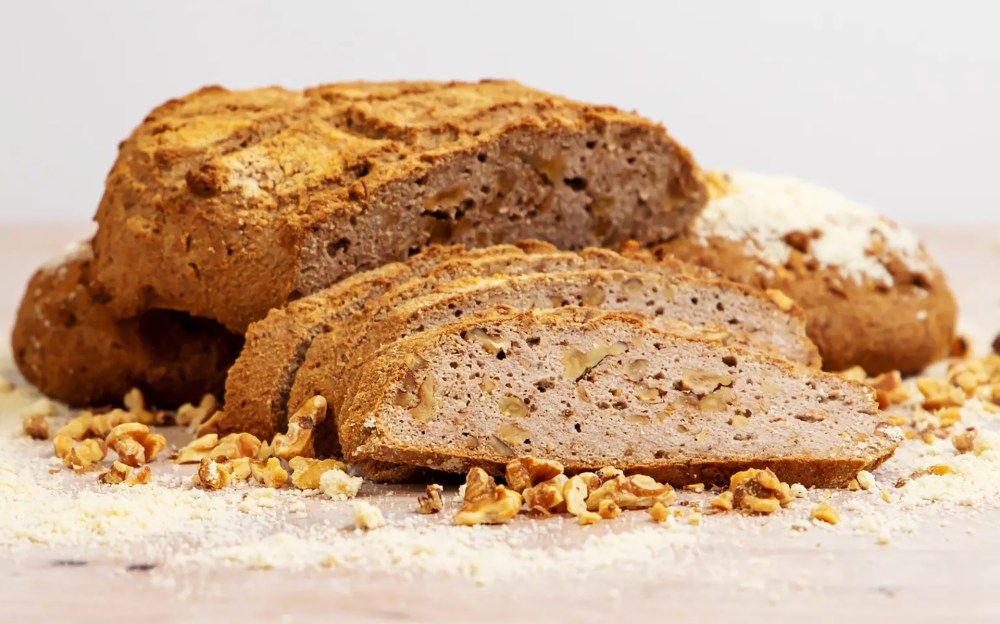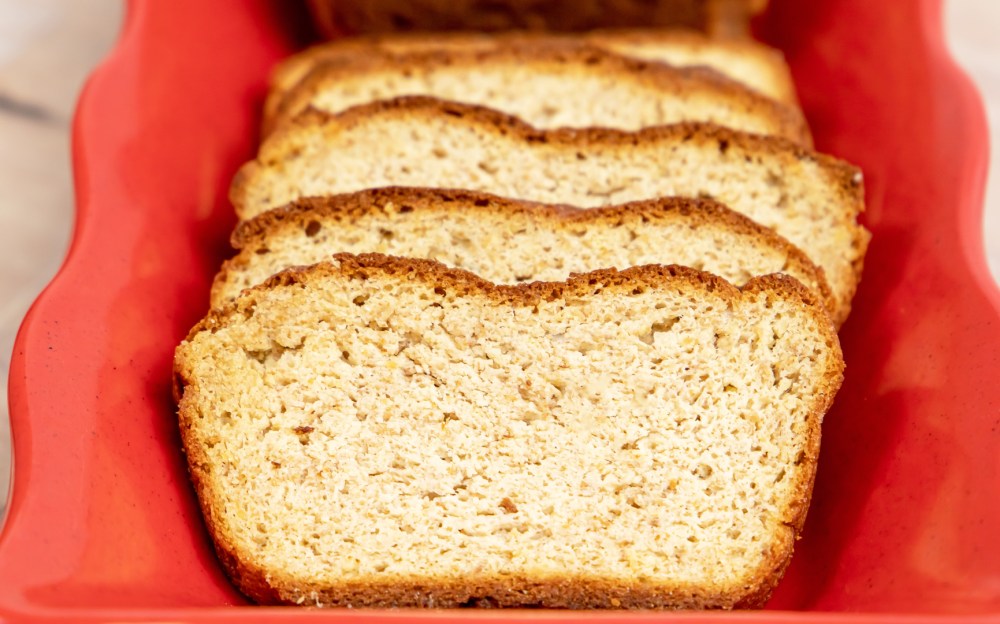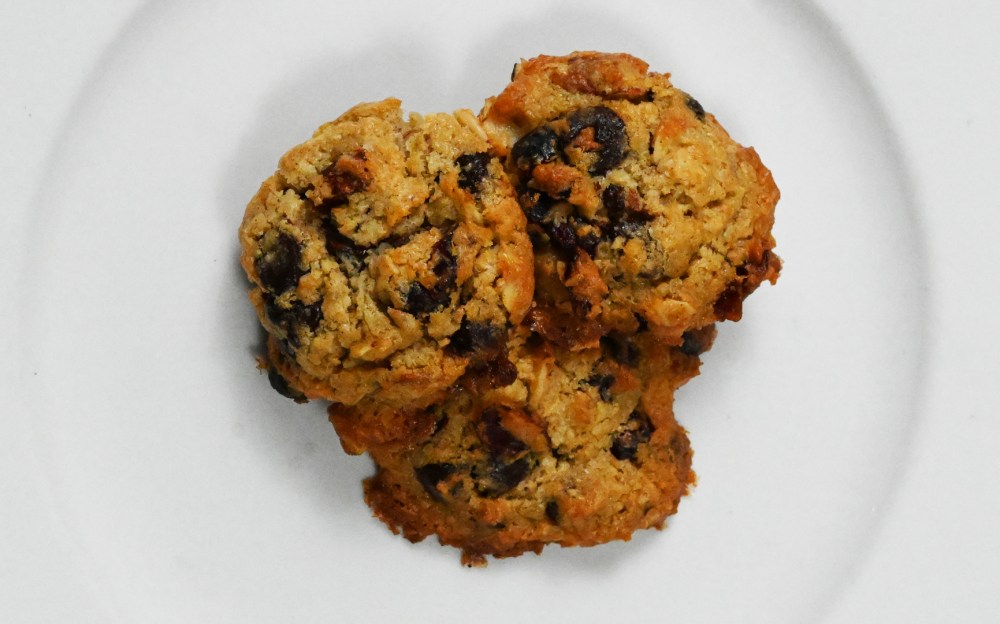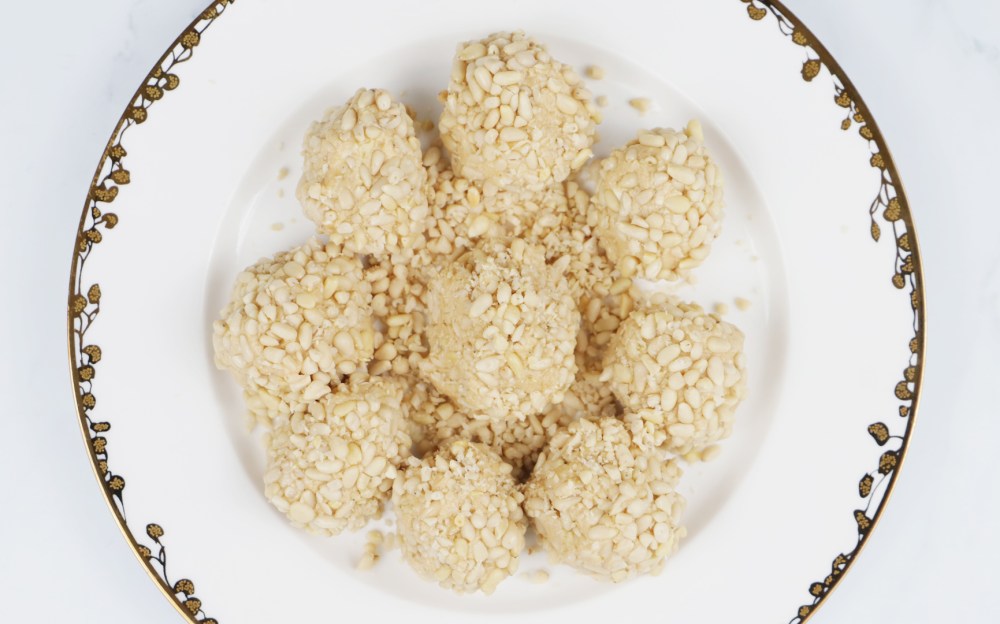At a glance
Following a keto diet doesn’t have to be complicated. By focusing on whole, nutrient-dense low-carb foods, beginners can adapt more easily to the metabolic changes of the ketogenic diet and enjoy lasting health benefits. With the right guidance and a Healthy Keto® approach, you can start building sustainable habits and feel your best.
Starting a ketogenic diet can feel overwhelming, but it doesn’t have to be.
This comprehensive keto diet for beginners guide breaks down everything you need to know–from how it works and what to eat to how to avoid common mistakes.
Whether you’re aiming to lose weight, improve your energy, or simply eat healthier, this beginner-friendly approach to Healthy Keto® will help you get started on a low-carb lifestyle.
What is the keto diet?
The ketogenic diet is a low-carbohydrate, moderate-protein, high-fat diet designed to shift the body’s primary energy source from glucose to fat.
This dietary approach significantly reduces carb intake, pushing the body into a metabolic state known as ketosis. In ketosis, the liver converts fats into ketone bodies, a group of organic acids that serve as a highly efficient fuel source when glucose is scarce.
In fact, brain cells, muscle tissue, and the heart prefer using ketones for energy, making them a powerful alternative fuel that supports mental clarity, physical endurance, and metabolic efficiency.
Reducing carbohydrate intake helps stabilize blood sugar and lower insulin levels, two key factors that allow the body to access stored fat for energy.
“Insulin, a key metabolic hormone, not only regulates blood sugar balance but also promotes fat storage and inhibits fat burning,” explains Dr. Berg. “By keeping insulin levels low, a low-carb diet enables the body to tap into stored body fat, which explains why keto is considered one of the most effective weight loss diets.”
The classic ketogenic diet was originally developed in the 1920s as a therapeutic treatment for epilepsy, as ketones have a stabilizing effect on brain activity and help reduce seizures.
Over time, health professionals began to explore its broader applications, and today, the keto diet is widely adopted for its potential to support weight loss, enhance mental clarity, promote metabolic balance and heart health, and stabilize blood sugar levels.
Watch the video below to learn how to get started with a nutrient-dense Healthy Keto diet.
Keto vs. Healthy Keto®
Both Healthy Keto and traditional keto follow a low-carb approach, aiming to trigger ketosis and fat burning through restricting carbohydrate intake. However, their focus on meeting the body’s overall nutritional needs can differ.
Conventional keto diets tend to prioritize macronutrient ratios without considering food quality. This often results in a restrictive diet filled with processed meats, unhealthy fats, and very few vegetables, which can lead to nutritional deficiencies and associated health issues.
Although weight loss may occur with such a diet plan, the lack of emphasis on healthy eating and micronutrient diversity can limit its long-term effectiveness.
In contrast, Healthy Keto is an advanced version of a low-carb diet that emphasizes optimal nutrition by prioritizing minimally processed and nutrient-dense whole foods.
This meal plan encourages healthy eating habits by including organic full-fat dairy, pasture-raised meats and eggs, wild-caught fish, game meat, and plenty of non-genetically modified (GMO) non-starchy vegetables.
Compared to other diets focused on carbohydrate restriction, Healthy Keto offers a more sustainable option designed to support overall health and well-being while maintaining the metabolic benefits of ketosis.

What are the benefits of Healthy Keto?
Healthy Keto encourages the body to burn fat rather than carbohydrates. This supports balanced insulin levels, a crucial factor in supporting a healthy body weight and maintaining metabolic wellness.
Because of the profound metabolic and hormonal changes triggered by restricting carbohydrates, keto is an excellent meal plan for individuals with diabetes or insulin resistance. It’s also commonly used as a prediabetes diet to help stabilize blood sugar early.
Research published in Nutrients highlights the many potential health benefits of the ketogenic diet for managing and preventing diabetes. These outcomes are associated with improvements in blood sugar control, insulin sensitivity, body composition, and a healthier lipid profile.1
In addition, a nutritious ketogenic diet can also contribute to healthy blood pressure, improve low-density lipoprotein (LDL) cholesterol, and support overall cholesterol levels. These are important factors in reducing the risk of heart disease, atherosclerosis, and other cardiovascular conditions.
Beyond metabolic health, research shows that a well-formulated keto diet may offer potential benefits for brain health, including support for Alzheimer’s disease prevention and cognitive function.
A study published in Nutrients confirms this, summarizing, “Ketone bodies can enhance mitochondrial efficiency and neuronal energy metabolism. This process has been demonstrated to mitigate neurodegeneration and may promote neuroprotective effects.”2
The ketogenic diet has also shown potential benefits for other health conditions, including:
- Obesity and metabolic syndrome
- Polycystic ovary syndrome (PCOS)
- Non-alcoholic fatty liver disease (NAFLD)
- Neurological disorders
- Migraines
- Mood disorders
- Sleep apnea
- Chronic Fatigue Syndrome
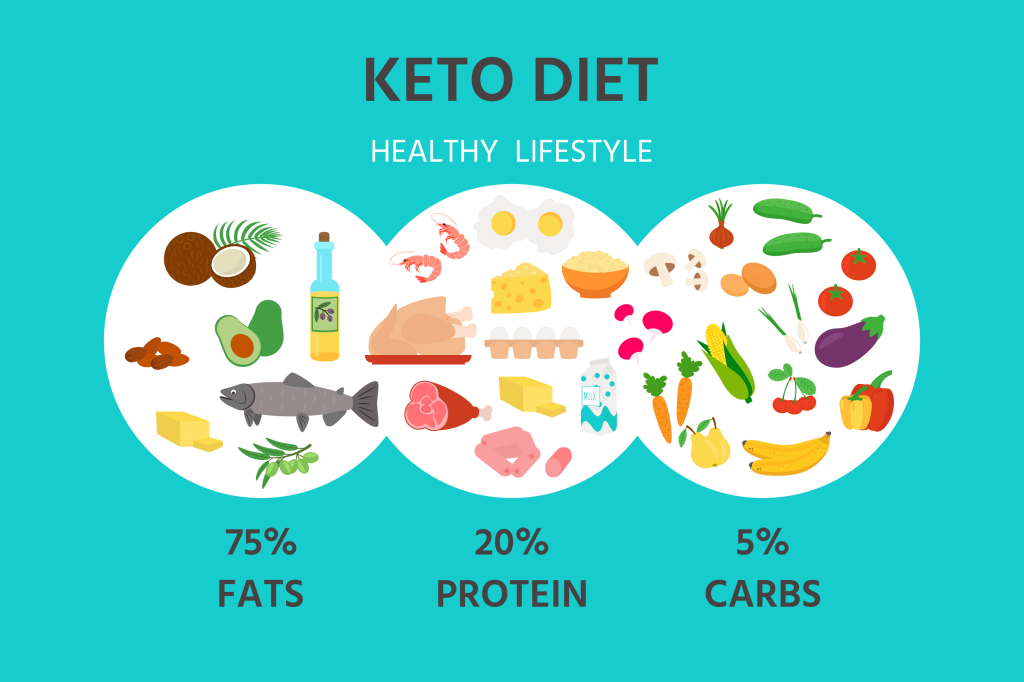
Keto guidelines
Starting a Healthy Keto lifestyle involves more than just cutting carbs. To truly benefit from ketosis, it’s important to understand how to balance macronutrients, count net carbs accurately, and prioritize food quality.
These four core principles will help you achieve a sustainable and nutrient-rich low-carb diet.
1. Macronutrient ratio
A well-formulated Healthy Keto plan follows a general macronutrient breakdown of approximately 75 percent fat, 20 percent protein, and no more than 5 percent carbohydrates.
To trigger and maintain the metabolic state of fat burning, most individuals aim for around 20 to 50 grams of net carbs per day.
While it may seem overwhelming to obtain 75 percent of your daily calorie requirements from fat, it’s important to remember that fat contains more than double the calories per gram compared to protein and carbohydrates.
Each gram of fat contains nine calories, while protein and carbs offer only four calories per gram. This means you can reach your fat intake goals with relatively smaller portions.
For example, adding just one tablespoon of olive oil to a salad provides about 120 calories from fat, helping to meet macronutrient targets without needing to eat large amounts of fatty foods.
Incorporating nutrient-rich sources such as avocados, nuts, seeds, and oily fish makes it both easy and enjoyable to meet your fat intake on a Healthy Keto plan.
2. Understanding net carbs
For long-term keto success, it’s essential to understand the difference between a food’s total carbohydrate count and its net carbohydrate content.
Net carbs refer to total carbs minus fiber, as fiber isn’t digested or absorbed by the body in the same way as other carbohydrates.
For example, one cup of broccoli contains 6 grams of total carbohydrates and 2.5 grams of fiber, leaving a net carb count of just 3.5 grams.
By subtracting fiber from the total carb content, you get a more accurate measure of the carbs that impact your blood sugar and insulin levels, which is crucial for staying in ketosis.
3. Protein requirements
Obtaining the right amounts of protein on keto is critical to support muscle mass, tissue repair, hormonal balance, and immune function.
Consuming too little protein can lead to muscle loss and poor metabolic health, while eating too many high-protein foods can potentially interfere with ketosis in some individuals.
The recommended daily protein intake is commonly stated as 0.8 grams of protein per kilogram of body weight for the average adult. This typically translates to about 3 to 6 ounces (85 to 170 grams) of protein-rich food per meal, depending on individual needs and goals.
However, evidence published in Nutrients highlights that athletes, older individuals, those recovering from surgery, and people with higher physical demands may require significantly more protein to support muscle maintenance, recovery, and overall metabolic health.3
Some of the best high-quality protein sources for Healthy Keto include pasture-raised eggs, grass-fed beef, wild-caught fish like salmon and sardines, organic poultry, and full-fat dairy products such as Greek yogurt and cheese.

4. Food quality over quantity
The quality of your food matters just as much as the macronutrient ratios.
Instead of relying on processed low-carb products packed with refined seed oils and unhealthy fats, focus on whole, nutrient-dense foods.
Choose high-quality protein sources, including wild-caught fish, pasture-raised eggs, and grass-fed meats, and opt for healthy fats such as extra virgin olive oil, avocado, and coconut oil.
Prioritizing unprocessed, organic ingredients not only supports better health but also ensures your body receives the vital nutrients it needs to function optimally.
5. Importance of vegetables
Aiming for 7 to 10 cups of salad and non-starchy vegetables daily is a cornerstone of Healthy Keto.
While Healthy Keto is low in carbs, it’s not low in nutrition. Nutrient-dense vegetables such as broccoli, bell peppers, Brussels sprouts, spinach, Swiss chard, and kale provide fiber, antioxidants, and essential vitamins and minerals that support digestion, detoxification, and overall health.
In addition, including a wide variety of low-carb vegetables in your meals helps balance the richness of fats and proteins, making your diet more sustainable and beneficial in the long term.
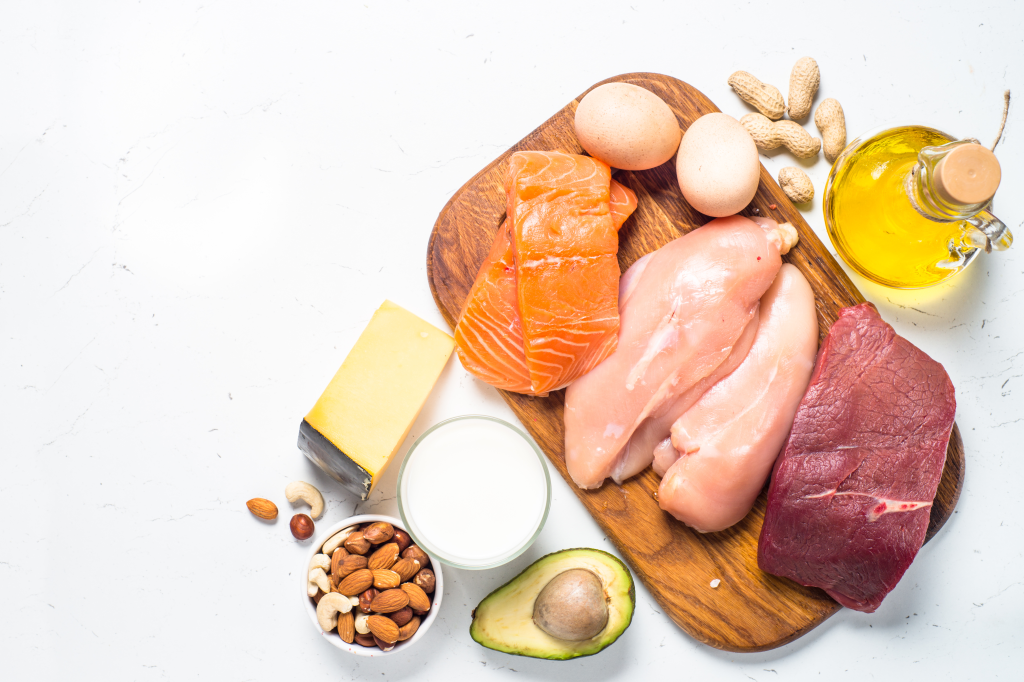
Keto vs. non-keto foods
Understanding which foods support ketosis–and which disrupt it–is key to long-term keto success.
Healthy Keto-approved foods are generally low in net carbs and rich in nutrients. These include non-starchy vegetables and leafy greens, which provide fiber, vitamins, and minerals without spiking blood sugar levels.
Healthy fats, such as olive oil, coconut oil, avocados, grass-fed butter, ghee, and nuts, form the backbone of keto energy intake and should be incorporated into every meal to support ketosis.
High-quality protein sources like pasture-raised eggs, grass-fed meats, wild-caught fish, and organic full-fat dairy also play an essential role in preserving lean body mass and supporting metabolic function.
In contrast, non-keto foods are those high in sugars and carbohydrates, especially refined and processed ones. These foods can quickly raise blood sugar and insulin levels, thereby disrupting ketosis and blocking fat burning.
Non-keto-approved foods include:
- Bread
- Crackers
- Rice
- Pasta
- Cereals
- Chips
- Most fruits
- Baked goods such as cakes, waffles, and pancakes
- Starchy vegetables, including potatoes and corn
- Ice cream and most desserts
- Sweetened beverages
In addition, various high glycemic sweeteners and certain sugar alcohols can interfere with blood sugar and insulin balance and quickly kick you out of ketosis. These include honey, maple syrup, high-fructose corn syrup, maltitol, sorbitol, and aspartame.

How to get started on the Healthy Keto diet
The Healthy Keto diet focuses on low-carb eating and an emphasis on whole, nutrient-dense foods. Unlike traditional dirty keto, this approach prioritizes food quality and supports long-term wellness, not just weight loss.
Here’s how to begin your Healthy Keto journey with confidence and clarity.
Clean up your kitchen
Start by clearing out high-carb and processed foods like bread, sugary snacks, soda, pasta, and cereals, as they may easily tempt you and make sticking to keto harder.
Instead, restock your pantry and fridge with keto-friendly foods, including leafy greens, non-starchy vegetables, quality proteins, and healthy fats.
Having carb-free ingredients readily available makes meal prep easier and keeps you on track, especially during busy days or moments of hunger.
Plan your meals
Meal planning is key to avoiding impulsive eating and ensuring you get the right nutrients. Aim to build each meal around whole foods that combine healthy fats, moderate amounts of protein, and plenty of low-carb, non-starchy veggies.
Keeping meals simple helps eliminate decision fatigue, saves valuable time, and makes it easier to enjoy and stick with keto in the long run.
Consider meal prepping
Meal prepping is a great way to stay consistent, especially during busy weeks. Set aside time once or twice a week to batch-cook proteins, chop vegetables, and portion out meals into containers.
Having ready-to-go options in the fridge or freezer reduces the temptation to reach for less healthy choices and keeps you on track with minimal daily effort.

Keto diet tips for beginners
Starting a Healthy Keto lifestyle can feel overwhelming, but with the right guidance, you can make the transition smooth and sustainable and set yourself up for lasting success on your keto journey.
Here are five essential keto diet tips for beginners.
1. Don’t fear healthy fats
The long-standing belief that saturated fat causes cardiovascular disease has long been refuted, and high-quality sources such as grass-fed butter and coconut oil may actually support heart health.
Fat is your primary fuel source on keto. Include a variety of healthy fats such as avocado, extra virgin olive oil, coconut oil, butter, and fatty fish. These options not only support ketosis but also help you feel full and satisfied.
2. Track your net carbs
To trigger and maintain ketosis, most people need to limit their net carbohydrate intake to around 20 to 50 grams per day.
Tracking your net carbs with a food journal or mobile app can be incredibly helpful, especially if you are new to keto. It builds awareness of what you’re actually consuming and helps identify hidden sources of carbs in packaged foods, sauces, and even some vegetables.
3. Prioritize hydration
The metabolic changes triggered by ketosis increase your body’s need for fluids, especially during the first few weeks of adapting to a low-carb diet.
As glycogen stores are depleted, the body releases more water, leading to more frequent urination, which can increase the risk of dehydration and electrolyte imbalances.
To stay hydrated, aim to drink plenty of water and support electrolyte balance by adding a pinch of sea salt to your water, drinking bone broth, and including plenty of mineral-rich foods.
4. Ketone testing
Testing your ketone levels can provide valuable insight into whether you’re truly in ketosis and how your body is responding to a low-carb diet.
For beginners, urine strips are a convenient and inexpensive option, though they become less reliable over time. Blood ketone meters are the most accurate and can help you fine-tune your diet, especially if you’re experiencing a weight loss plateau.
While not required, occasional ketone testing can boost motivation, confirm progress, and help you better understand your body’s response to carbohydrate restriction.
5. Make smart choices when eating away from home
Following Healthy Keto principles while dining out can feel tricky at first, but with a bit of preparation and mindful choices, it’s entirely achievable.
Check menus in advance, and don’t hesitate to ask for substitutions. Swap fries for a side salad, skip the bun, and ask for dressings and sauces on the side. Restaurants are often happy to accommodate, especially when you’re clear about your dietary needs.
If you’re invited to a party or social gathering, bring a keto-friendly dish to share. This not only ensures you’ll have something you can enjoy, but it also introduces others to how delicious keto eating can be.
6. Be patient and listen to your body
Keto adaptation doesn’t happen overnight. As your body transitions from burning glucose to using fat for fuel, it’s common to experience temporary keto side effects, including tiredness, brain fog, or cravings, especially during the first week or two.
Be patient and give your body time to adapt and prioritize rest, hydration, and nutrient-rich meals.
Most importantly, listen to your body and adjust your approach as needed. If you feel unusually tired, dizzy, or unwell, consider evaluating your macronutrient and electrolyte intake, sleep quality, and stress levels.

Common keto mistakes and troubleshooting
When done correctly, Healthy Keto diet is a highly effective way to improve energy, burn fat, and support metabolic health. However, many beginners, and even seasoned keto dieters, make simple mistakes that can slow progress and derail results.
Here are six common keto pitfalls and how to avoid them.
1. Consuming too many calories
Although keto is a high-fat diet, eating too much fat, especially the wrong kinds, can work against your health goals. Fat is calorie-dense, and excess intake can stall weight loss even if you’re technically in ketosis.
The liver prioritizes metabolizing dietary fats before tapping into stored body fat, and if you consistently consume more calories than the body needs, the excess will be stored as body fat.
2. Excess protein intake
Eating too much protein can disrupt ketosis due to gluconeogenesis, a metabolic pathway where surplus amino acids are converted into glucose, which can potentially raise blood sugar levels and inhibit ketone production.
However, inadequate protein consumption can lead to muscle breakdown, which compromises lean body mass and overall metabolic health.
It’s best to aim for a moderate protein intake that suits your body’s needs, which for most people is about 3 to 6 ounces of protein per meal.
3. Relying on processed keto foods
Not all low-carb foods are healthy, and many packaged products labeled keto-friendly are loaded with potentially harmful preservatives, refined seed oils, modified starches, and artificial sweeteners.
To stay on track with Healthy Keto principles, build your meal plan around nutrient-dense, whole foods such as leafy greens, pasture-raised meats, healthy fats, and keto-friendly veggies.

4. Drinking alcohol
Although spirits and certain types of wine contain little to no carbs, drinking alcohol on keto can quickly push you out of ketosis because your body prioritizes metabolizing alcohol over fat.
When you consume alcohol, the liver shifts its focus to process and eliminate ethanol, as it treats it as a toxin. This temporarily reduces ketone production and fat burning, which can hinder fat loss and may contribute to weight gain.
5. Hidden carbs and sugars
Many processed and packaged foods, and even supplements and certain medications, can contain hidden sugars and starches that can sabotage your keto goals.
Always read labels carefully and avoid products with ingredients such as maltodextrin, high-fructose corn syrup, corn syrup solids, modified starch, and other carb-loaded additives.
Additionally, talk to your pharmacist or healthcare provider about any medications or supplements you take, as some may contain sweeteners or starch-based fillers that could impact your carbohydrate intake and ketosis.
6. Cheat days
Frequent cheat days can undo hard-earned progress. Even one high-carb meal can kick you out of ketosis, and it may take several days to resume fat burning.
Constantly switching between burning fat and sugar for fuel can actually impair metabolic flexibility, making it harder to burn fat consistently and maintain stable energy levels.
Rather than cheating, find satisfying keto-friendly alternatives for your favorite foods that you can indulge in without compromising ketosis.

Understanding keto flu and how to overcome it
Keto flu is a temporary set of symptoms some people experience when starting a low-carb diet. It’s not an actual flu, but rather your body adjusting to burning fat for fuel instead of carbs.
As carb intake drops, your body shifts into ketosis. This transition can cause side effects like tiredness, headaches, irritability, and brain fog as your cells adapt to utilizing a new fuel source.
Though uncomfortable, keto flu usually lasts a few days and signals that your body is beginning to shift into fat-burning mode.
However, keto flu symptoms can be worsened and prolonged by dehydration, electrolyte imbalances, and nutritional deficiencies.
Here are four steps you can take to minimize the risk of developing keto flu.
1. Stay hydrated and replenish electrolytes
Ensuring adequate hydration and replenishing electrolytes is one of the most important steps to keep keto flu symptoms at bay.
Carbohydrate restriction stimulates your body to excrete more water and essential electrolytes such as sodium, potassium, and magnesium.
To feel your best during keto adaptation, drink plenty of water and consider adding mineral-rich options such as bone broth, sea salt, or a sugar-free electrolyte powder to support mineral balance and combat keto flu symptoms like tiredness and muscle discomfort.
2. Prioritize foods rich in B vitamins
B vitamins are a family of eight essential nutrients that help regulate energy metabolism, support brain and nervous system function, and assist with hormone production.
Because many high-carb foods, such as fortified grains, legumes, and fruits, are common sources of B vitamins, shifting to a low-carb diet may reduce your intake and increase the risk of deficiencies.
To keep B vitamin levels balanced on keto, focus on nutrient-dense foods such as dark leafy greens, eggs, avocados, broccoli, beef liver, salmon, sardines, and grass-fed meats. These foods can help maintain optimal B vitamin intake while supporting your overall well-being.
3. Adjust your carbohydrate intake
Gradually lowering your carbohydrate intake instead of cutting carbs drastically overnight can help reduce the severity of keto flu symptoms.
Slowly tapering carb consumption over several days or weeks gives your metabolism more time to adapt to burning fat and using ketones as a primary fuel source.
4. Consume enough healthy fats and prioritize vegetables
Eating sufficient healthy fats and nutrient-rich vegetables plays a key role in preventing and managing keto flu symptoms.
If you don’t eat enough fat on keto, your energy levels can plummet, contributing to common keto flu symptoms such as tiredness and brain fog. Including plenty of healthy fats such as olive oil, avocado, coconut oil, fatty fish, and grass-fed butter ensures the body gets the fuel it needs to transition into ketosis.
At the same time, non-starchy, fiber-rich vegetables, such as spinach, kale, broccoli, and zucchini, provide essential vitamins and electrolyte minerals, especially magnesium and potassium, needed to support hydration and regulate muscle functions.
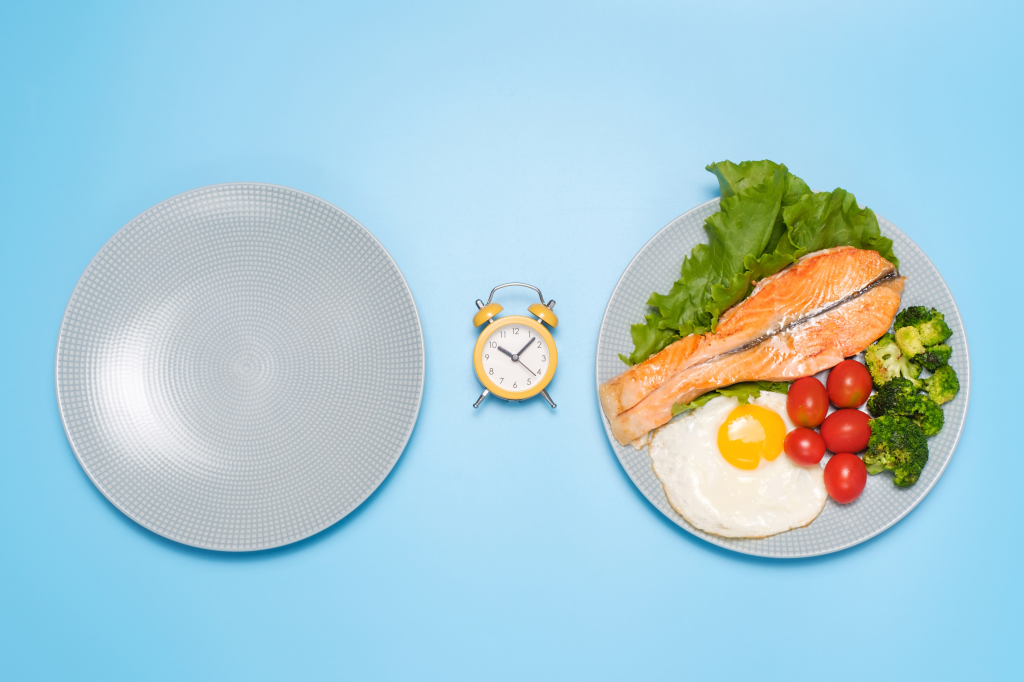
Combining keto with intermittent fasting
Combining Healthy Keto with intermittent fasting is an excellent strategy for optimizing health, accelerating weight loss, and enhancing mental clarity.
Intermittent fasting is a mealtime schedule that cycles between fasting periods and time-restricted eating windows. One of the most popular methods is the 18:6 fast, which involves abstaining from food for 18 hours and consuming all daily meals within a 6-hour window.
Extended periods of caloric restriction force the body to tap into stored body fat to generate energy. This not only enhances ketone production but also deepens the state of ketosis, making intermittent fasting an ideal complement to a low-carb ketogenic diet.
In addition, fasting activates autophagy, a natural cellular repair process in which the body clears out damaged cells and regenerates new, healthier ones. This contributes to reduced inflammation, improved immune function, and potentially slower aging.
Research published in Cells highlights, “Autophagy is a natural regulatory mechanism that removes harmful substances from the body, whilst playing a housekeeping role in the elimination of misfolded or aggregated proteins, the eradication of damaged organelles, proteins, and cancerous materials, and the elimination of foreign pathogens such as viruses.”4
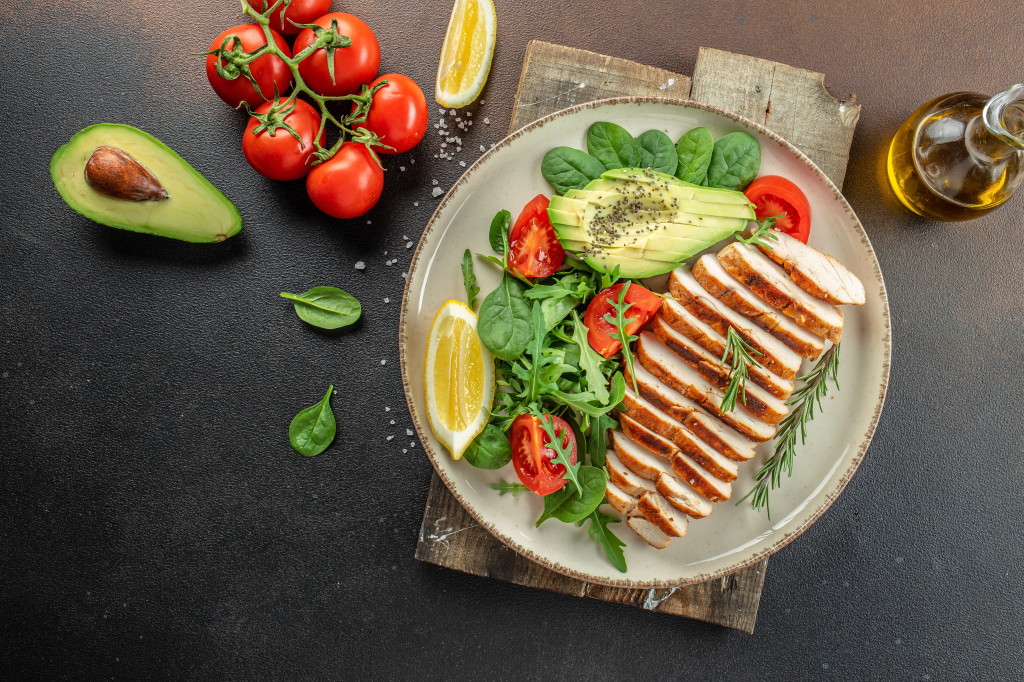
Delicious keto meals and treats
Following keto doesn’t mean sacrificing flavor or variety. Whether you’re looking for quick breakfasts, satisfying dinners, or indulgent low-carb desserts, there are plenty of delicious options to enjoy on a Healthy Keto diet.
Here are easy and nutritious recipes to keep your meals exciting and aligned with your keto goals.
Keto breakfast recipes
Keto lunch and dinner recipes
Keto salad recipes
Vegan keto recipes
Keto bread recipes
Keto dessert recipes
Key takeaways
- The ketogenic diet limits carbohydrate intake and increases nourishing fats to trigger ketosis, the metabolic state of fat burning.
- Healthy Keto emphasizes nutrient-rich whole foods, not just macronutrient ratios, making it an ideal low-carb approach to support a healthy body.
- The benefits of a well-formulated keto diet include improved insulin sensitivity, stable blood sugar levels, increased energy, and enhanced cognitive function.
- Prioritizing adequate hydration and electrolyte replacement supports keto adaptation and can help prevent common keto side effects.
- Combining Healthy Keto with intermittent fasting deepens ketosis and supports cellular repair, thereby maximizing the health benefits of a nutritious low-carb diet.
FAQ
1. What’s the best way to start keto?
The best way to start keto is to gradually remove high-carb foods like bread, pasta, sweets, and sugary drinks and replace them with nutrient-dense, low-carb options such as non-starchy vegetables, plenty of healthy fats, and moderate amounts of high-quality proteins.
This meal pattern will push your body into ketosis, a metabolic state of fat-burning that helps boost energy, curb hunger, and support weight loss.
2. How can I tell if I’m in ketosis?
Some of the signs indicating your body has transitioned into ketosis include weight loss, increased energy levels, reduced appetite, better mental focus, improved moods, and sometimes a distinctive fruity smell on your breath.
3. Can I have a cheat day on keto?
No, it’s not recommended to have cheat days on keto. Consuming high-carb foods can quickly knock you out of ketosis and delay your progress, as it may require several days to resume fat burning.
4. What should I eat during my first week on keto?
During your first week on keto, focus on non-starchy vegetables like spinach, kale, and broccoli, healthy fats such as avocado, olive oil, coconut oil, and nuts, and high-quality protein options, including eggs, chicken, fatty fish, and grass-fed beef.
Avoid all sugars and high-carb foods such as bread, pasta, rice, crackers, and cake, and prioritize staying hydrated and replenishing electrolytes to support your body’s transition into ketosis.
5. How many carbs should I eat per day when starting keto?
Most people aim to keep their net carb intake between 20 and 50 grams daily to enter and maintain ketosis.
6. How much weight can I lose in the first week of keto?
Many people experience rapid weight loss of up to six pounds during the first week of keto, primarily due to loss of water weight as the body uses up stored glycogen and releases excess fluids.
7. How do I avoid the keto flu?
To prevent keto flu, stay well-hydrated, replenish essential electrolytes, especially sodium, potassium, and magnesium, and focus on nutrient-dense whole foods that support your body’s transition into fat-burning.
Gradually lowering carbohydrates and giving yourself time to adapt can also help minimize symptoms.
8. Do I need to count calories on keto?
No, generally it’s not necessary to count calories on keto as the diet’s high-fat and moderate-protein content naturally promotes satiety and reduces overeating.
However, if weight loss stalls, tracking calories and fat intake can help ensure that you don’t consume more calories than your body requires.
9. Can I exercise when I first start keto?
Yes, you can exercise when starting keto, but be mindful that your energy levels may fluctuate as your body adapts to using fat as a fuel source. Initially, focus on low to moderate intensity workouts, and gradually increase intensity as your endurance improves.
10. What’s the difference between traditional keto and Healthy Keto®?
Traditional keto focuses solely on macronutrient ratios, often allowing processed foods and unhealthy fats.
In contrast, Healthy Keto® is a more advanced, health-centered low-carb approach that prioritizes minimally processed, nutrient-rich foods, such as organic vegetables, pasture-raised and grass-fed proteins, and wholesome fats, to promote sustainable wellness alongside effective ketosis.





